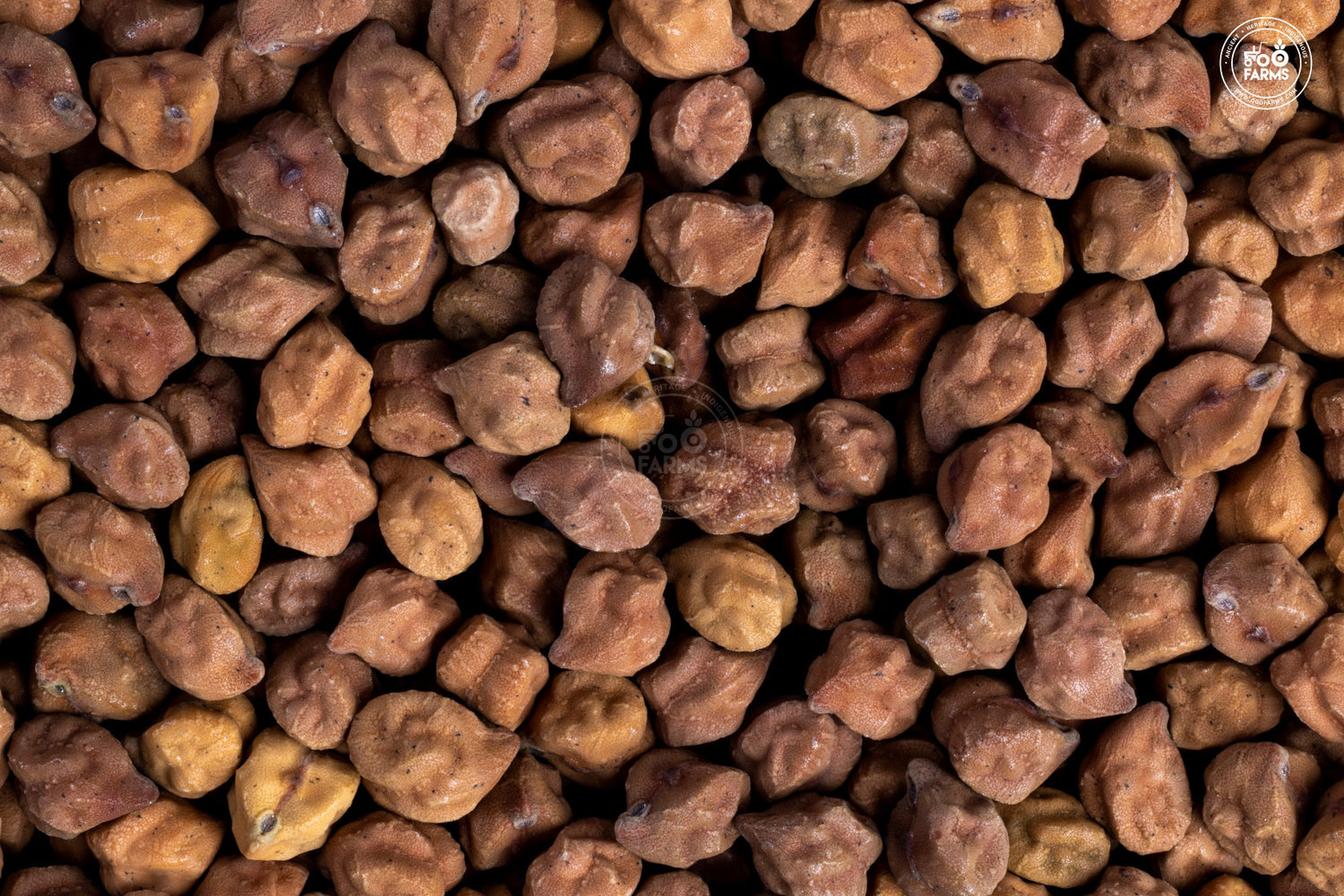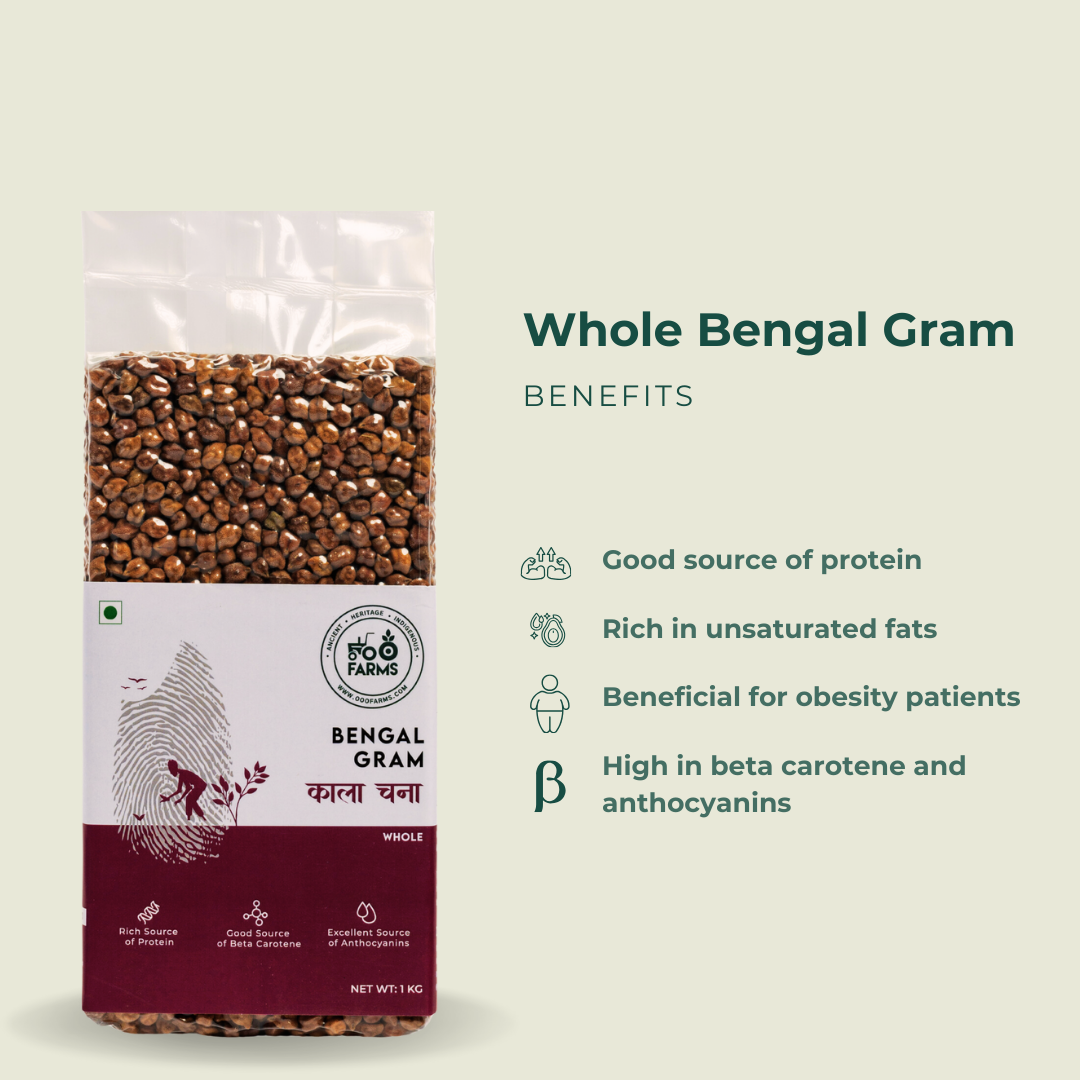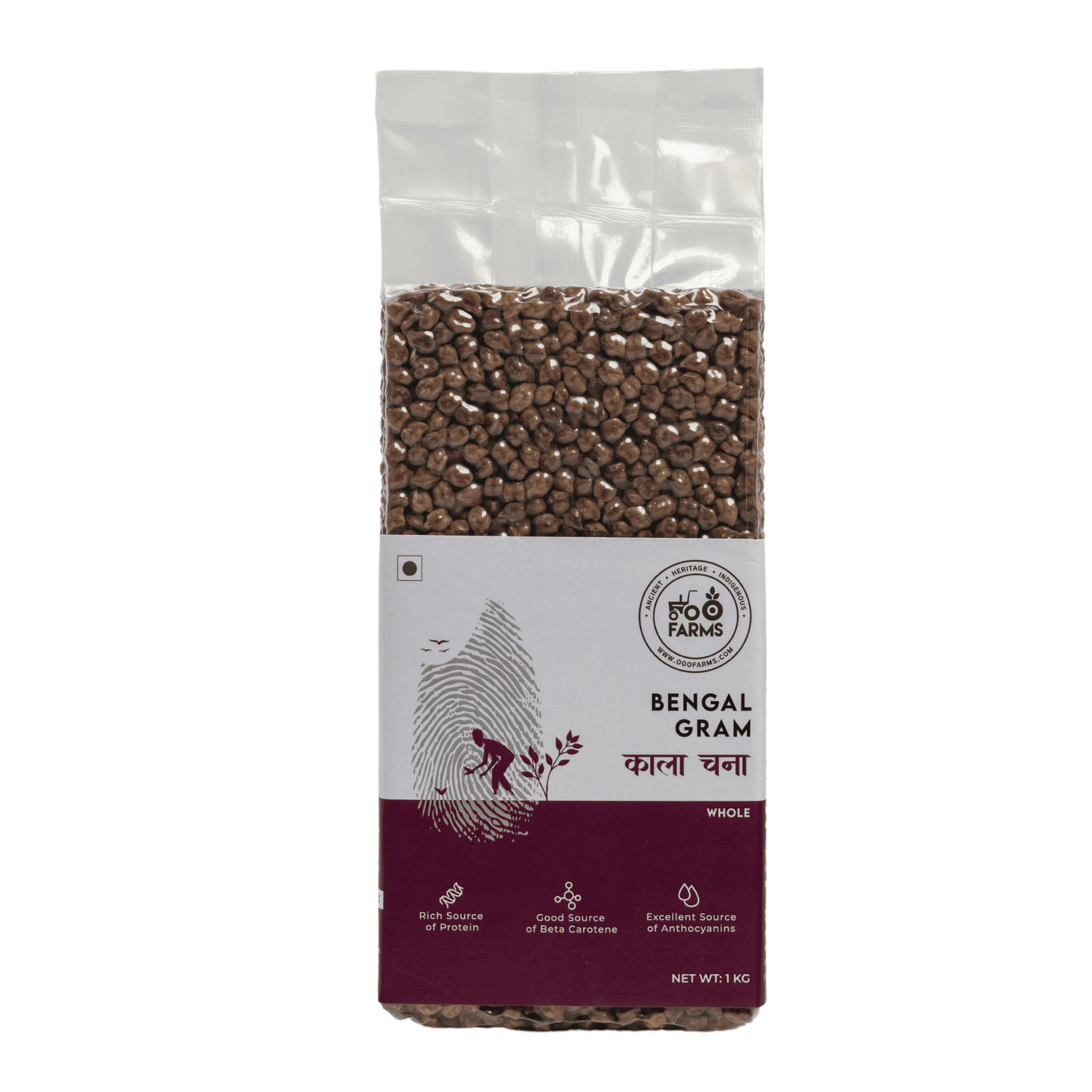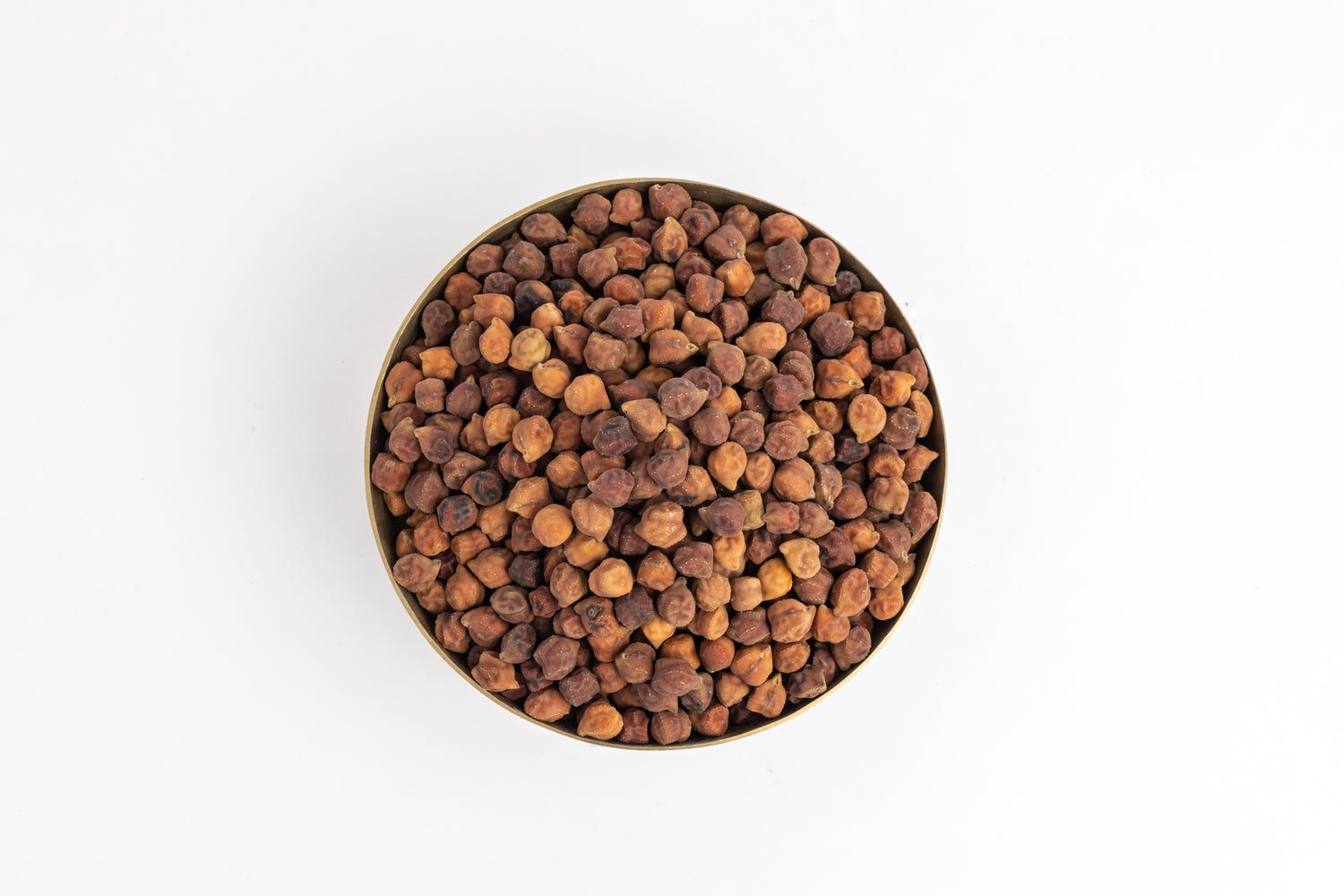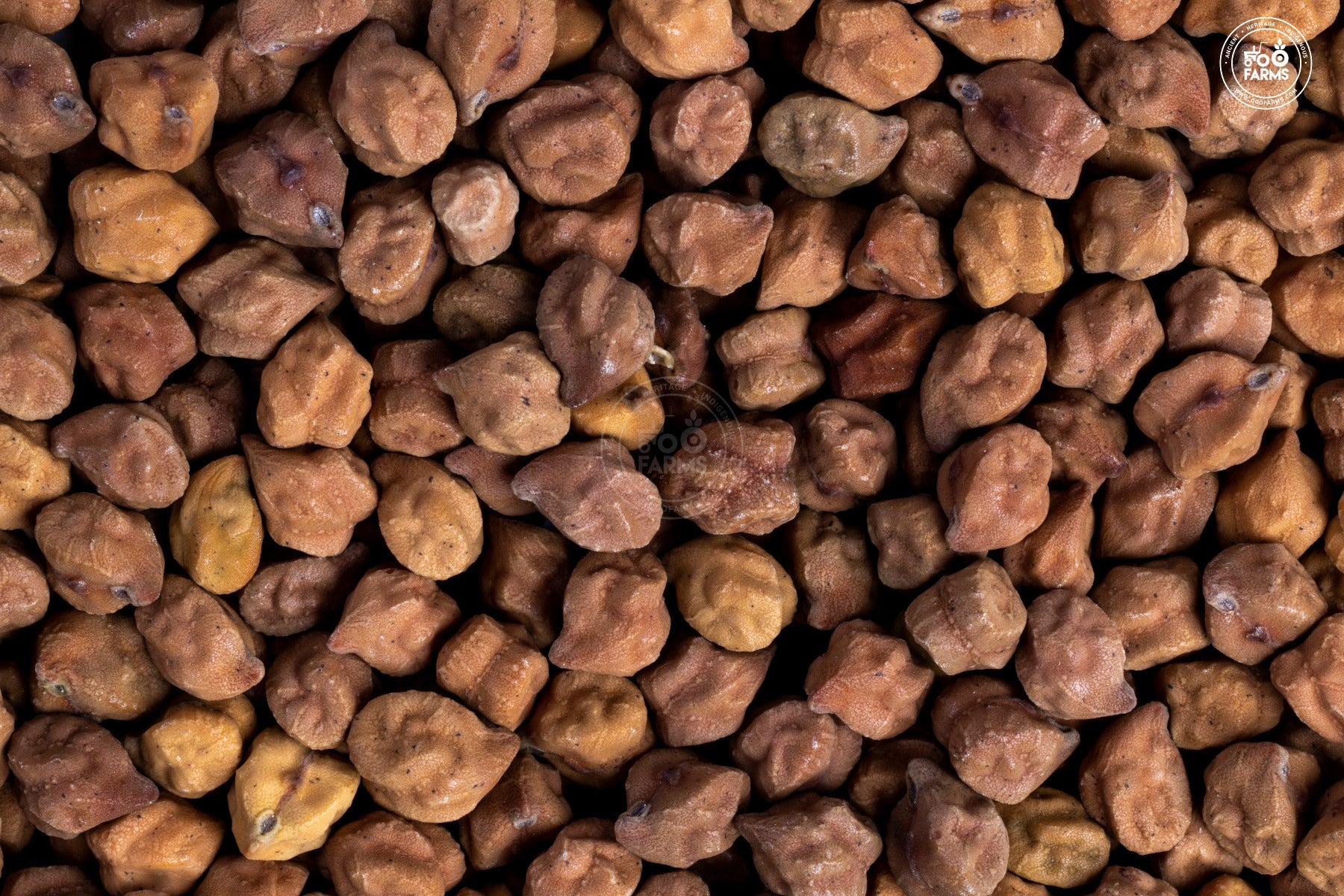
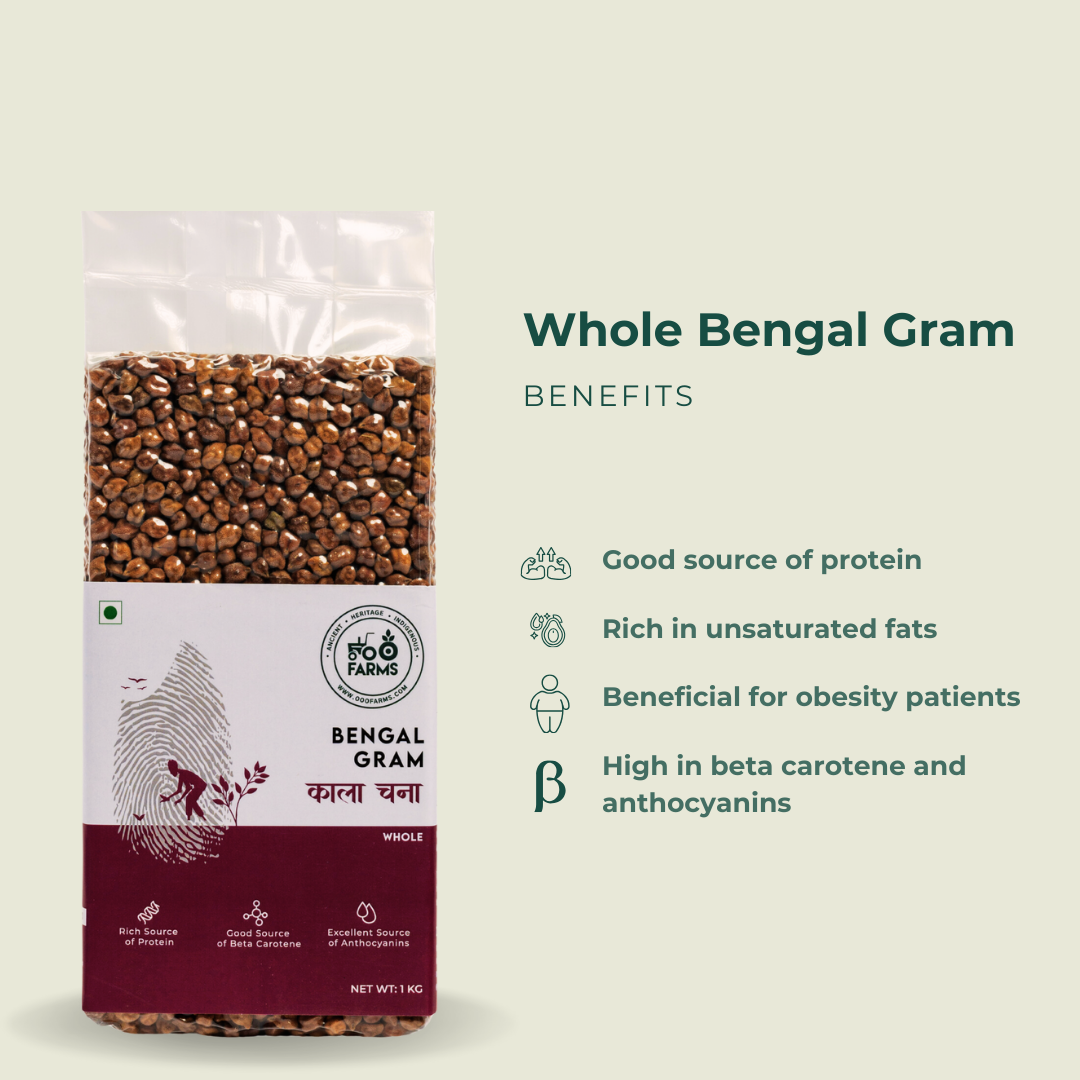
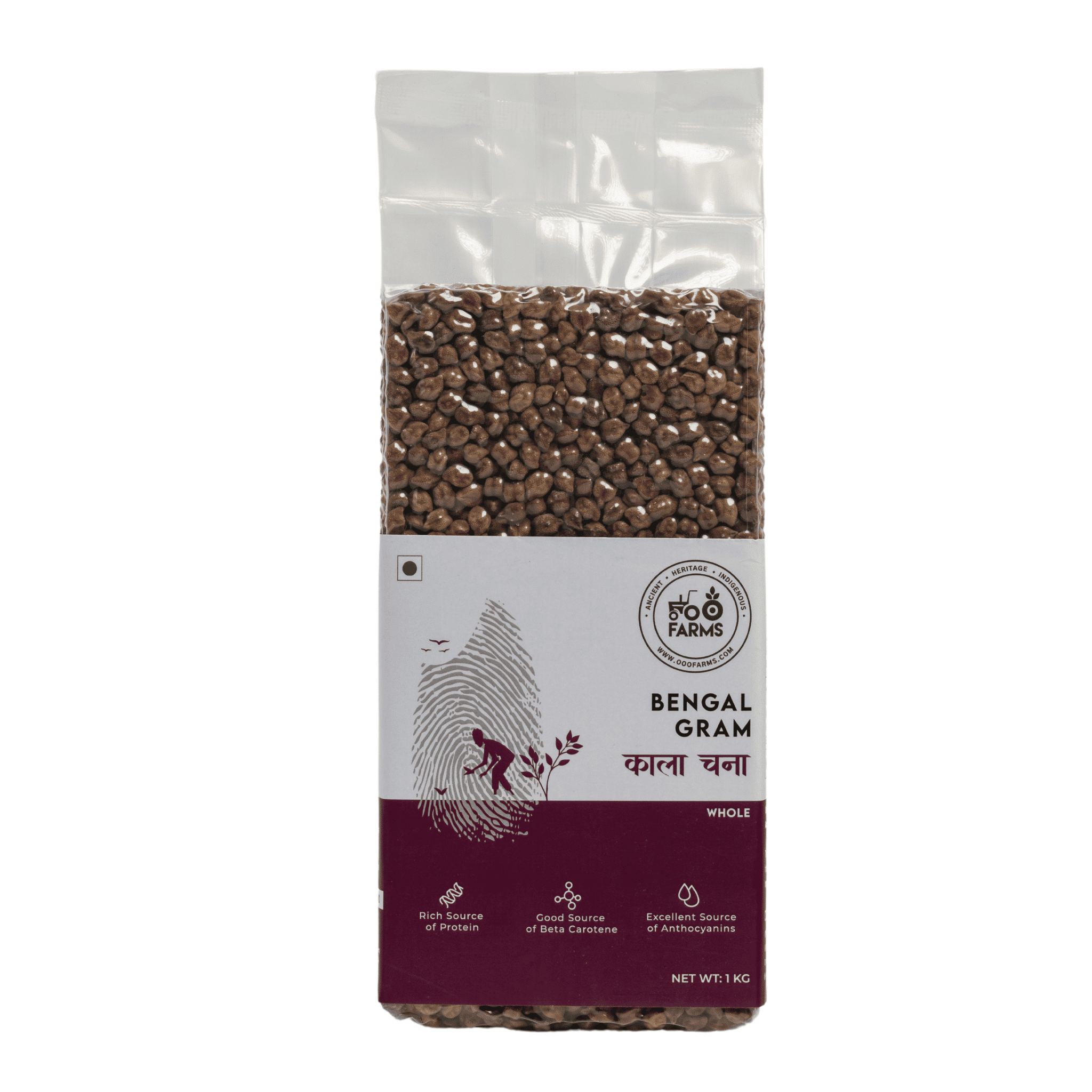
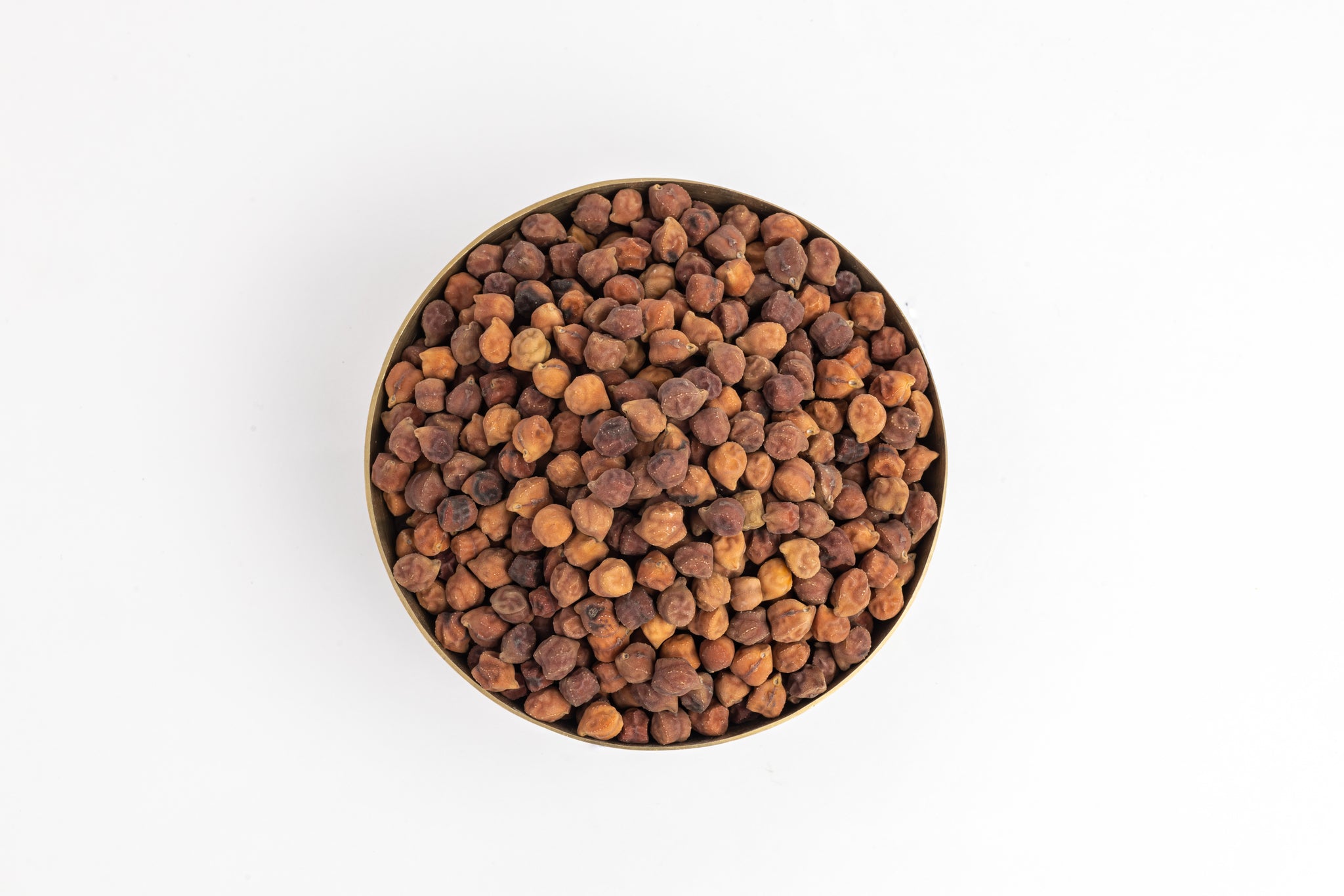
Additional Product Details
Description
An Old World pulse, Bengal Gram probably originated in present-day South-East Turkey and adjoining Syria. Desi Chana or Brown Chickpeas or Bengal Gram has been in India since ages and even finds its mention in the Puranas.
The large seed cream coloured cultivar we know as Chickpea probably found its way to India through Afghanistan two centuries ago, thus getting its name Kabuli Chana. It is a cultivar of the Bengal Gram.
The Brown Chana contains anthocyanins and is a good source of protein.
Health Benefits
Cooking Instructions
Recommended Usage
Commonly Known As
History


